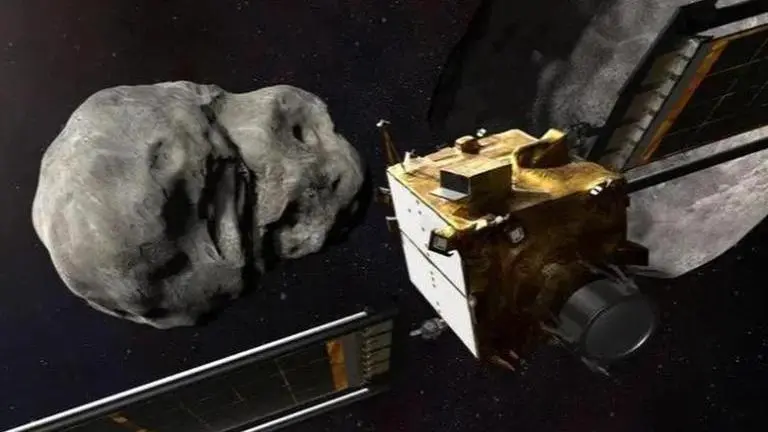Updated 24 August 2022 at 19:30 IST
NASA reveals exact time when its DART spacecraft will collide with asteroid on Sept 27
NASA's DART spacecraft is on its way to a binary asteroid system and is set to collide with Dimorphous at a speed of 23,760 kph on August 27.
- Science News
- 2 min read

NASA’s DART (Double Asteroid Redirection Test) spacecraft is just a few days away from achieving its mission objective, which is intentionally ramming into an asteroid moonlet. The US space agency revealed that the historic milestone will be achieved in the early hours of September 27, at 4:44 am IST to be precise (7:14 EDT on Sept 26). DART is currently headed toward a binary asteroid system and will intentionally collide with Dimorphous, a relatively small space rock orbiting the asteroid Didymos.
Our #DARTMission will intentionally crash into an asteroid—which poses no threat to Earth—on Monday, Sept. 26. It's a test of planetary defense should we ever need it.
— NASA (@NASA) August 23, 2022
And we're broadcasting it live. How to watch: https://t.co/HgP6DGDR3l pic.twitter.com/KT4ZevGkJo
How to watch the collision live?
NASA will provide live coverage of the collision through its official social media handles. The coverage will begin at 3:30 am IST and will be aired live on NASA TV and the agency's official website. You can also tune in to NASA's Facebook, Twitter and YouTube for the updates.
Explaining the DART mission concept
The mission was launched on November 24 last year to determine whether slamming a spacecraft into an asteroid can change its trajectory. This wild idea aims to develop a defence system for Earth from any potentially hazardous asteroid that could come hurtling toward our planet and threaten our existence. The asteroid in DART's focus is Dimorphous which is 160 metres or 530 feet wide and is orbiting Didymos (diameter of 780 metres or 2,560 feet) around 109.4 crore kilometres from our planet.
(Illustration of DART's orbital path; Image: NASA)
Advertisement
On August 27, the DART spacecraft will collide with Dimorphous at a speed of 23,760 kph and it will help scientists determine how feasible is the idea of artificially deflecting an asteroid.
Accompanying DART is the European Space Agency's (ESA) Hera mission which will examine the after-effects of the collision. Hera will release two CubeSats-- Milani and Juventas-- that will perform close-up investigations of the impact and send data back to Earth. They will also measure the size of the crater that might form after the collision.
Advertisement
In T minus *60* days time, @NASA and @JHUAPL's #DARTMission will impact the smaller of the 2 #Didymos #asteroids - and perform humankind's first orbital deflection for #PlanetaryDefense test. Next @ESA's #HeraMission will do its part... pic.twitter.com/fDkaTjWf44
— ESA Technology (@ESA_Tech) July 28, 2022
Notably, a recent study by the University of Bern and the National Centre of Competence in Research (NCCR) Planets revealed that the spacecraft will completely obliterate Dimorphous as the collision will be much more severe than anticipated. This conclusion was drawn considering the post-impact shock waves and the loose core of the asteroid moonlet.
Published By : Harsh Vardhan
Published On: 24 August 2022 at 19:30 IST

